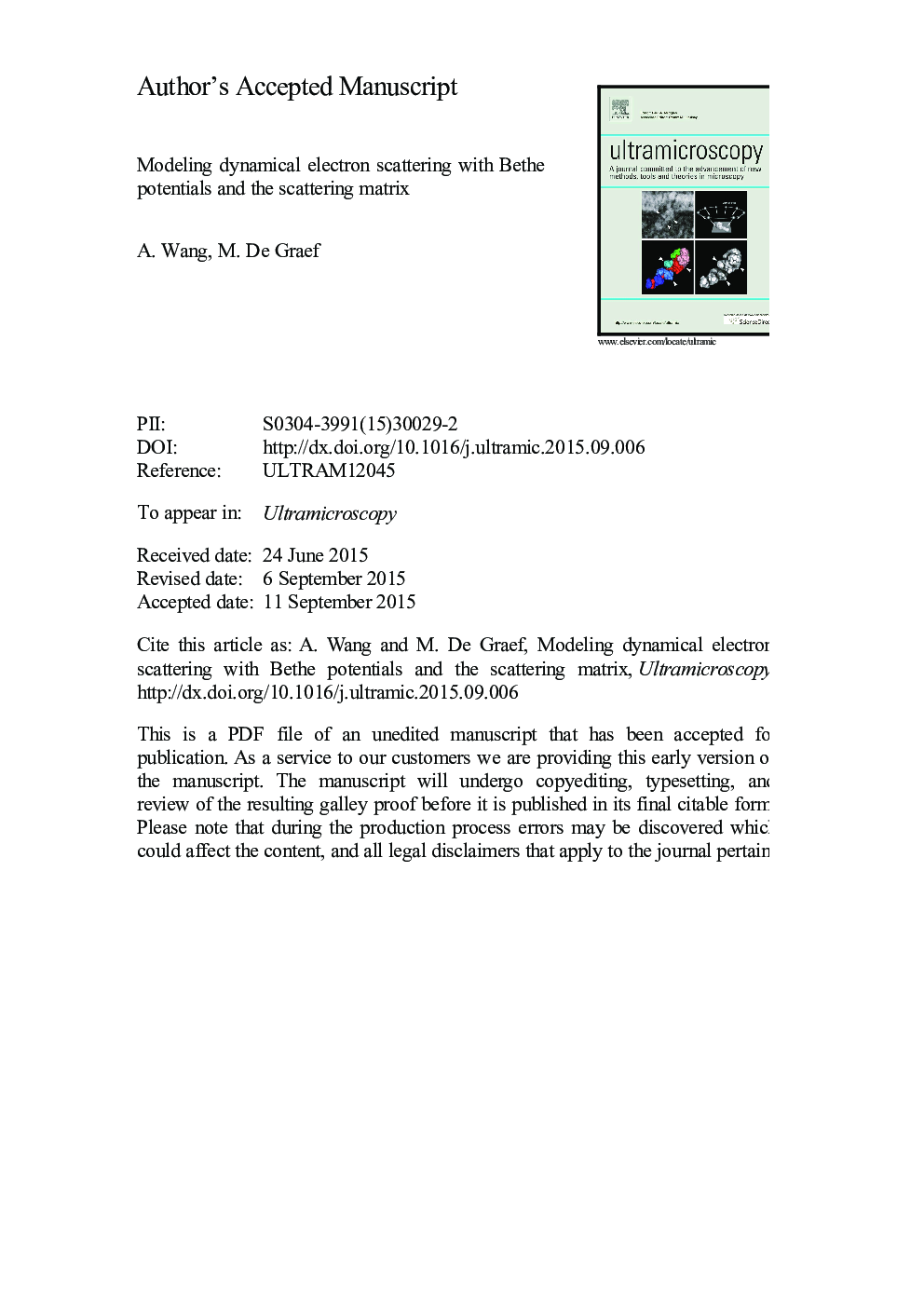| Article ID | Journal | Published Year | Pages | File Type |
|---|---|---|---|---|
| 8037990 | Ultramicroscopy | 2016 | 31 Pages |
Abstract
Bethe potentials were introduced by Bethe in 1928 as a first order perturbation approach to reducing the number of diffracted beams in dynamical electron scattering problems. The approach starts from the Bloch wave representation, and uses a threshold criterion to split the diffracted beams into two subsets, namely strong and weak beams. Since the use of Bloch wave based Bethe potentials for defect simulations is somewhat tedious, this paper applies the perturbation approach to the scattering matrix formalism, which is more readily adaptable for defect image simulations. The size of the dynamical matrix, and hence the computation time, can be reduced significantly. A threshold criterion for the separation of scattered beams into strong and weak sets is introduced. A general guideline in setting the threshold for strong or weak beam selection is discussed along with several parameters that may influence the threshold values, such as atomic number, accelerating voltage, structure complexity, incident beam tilt and temperature.
Related Topics
Physical Sciences and Engineering
Materials Science
Nanotechnology
Authors
A. Wang, M. De Graef,
